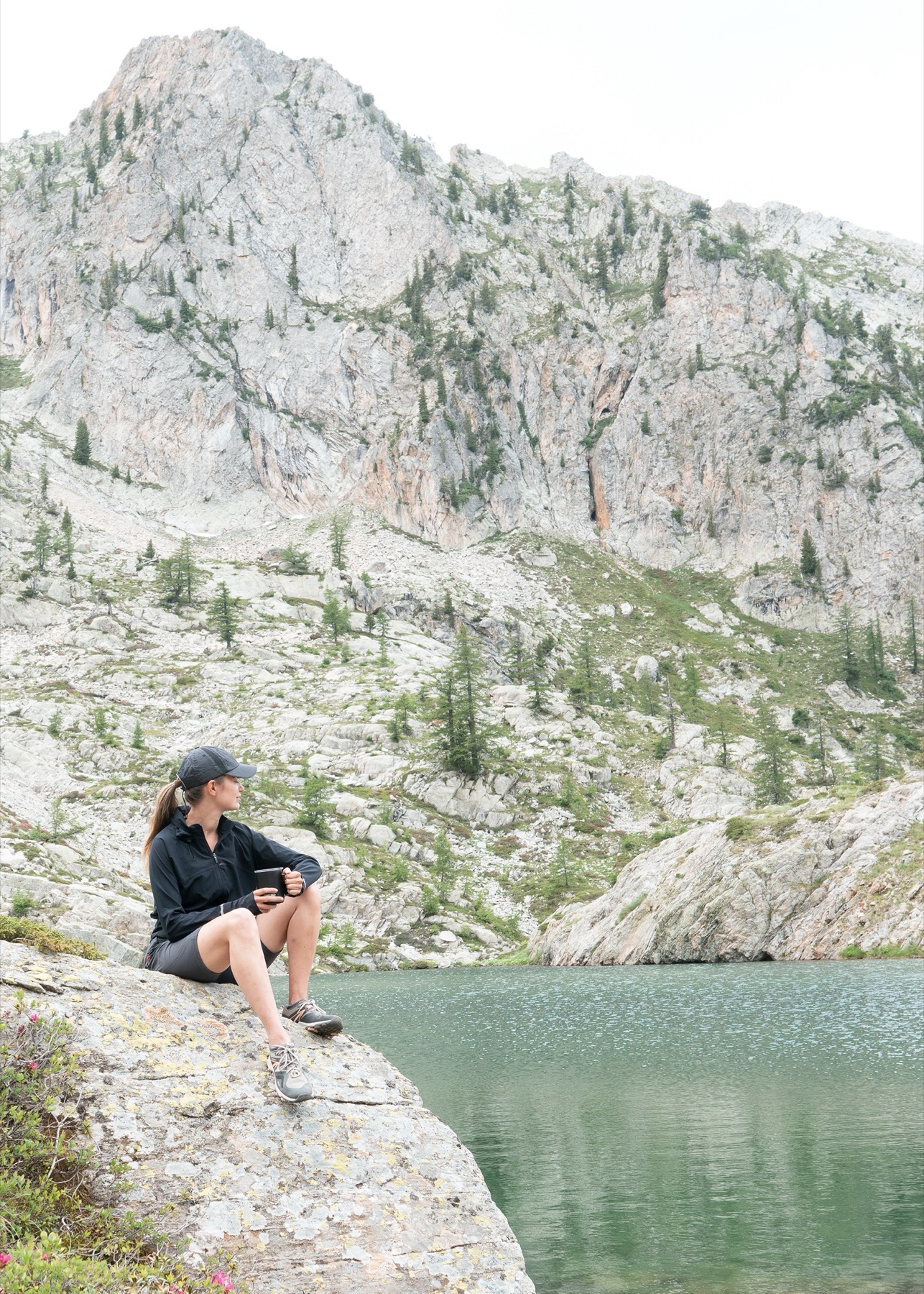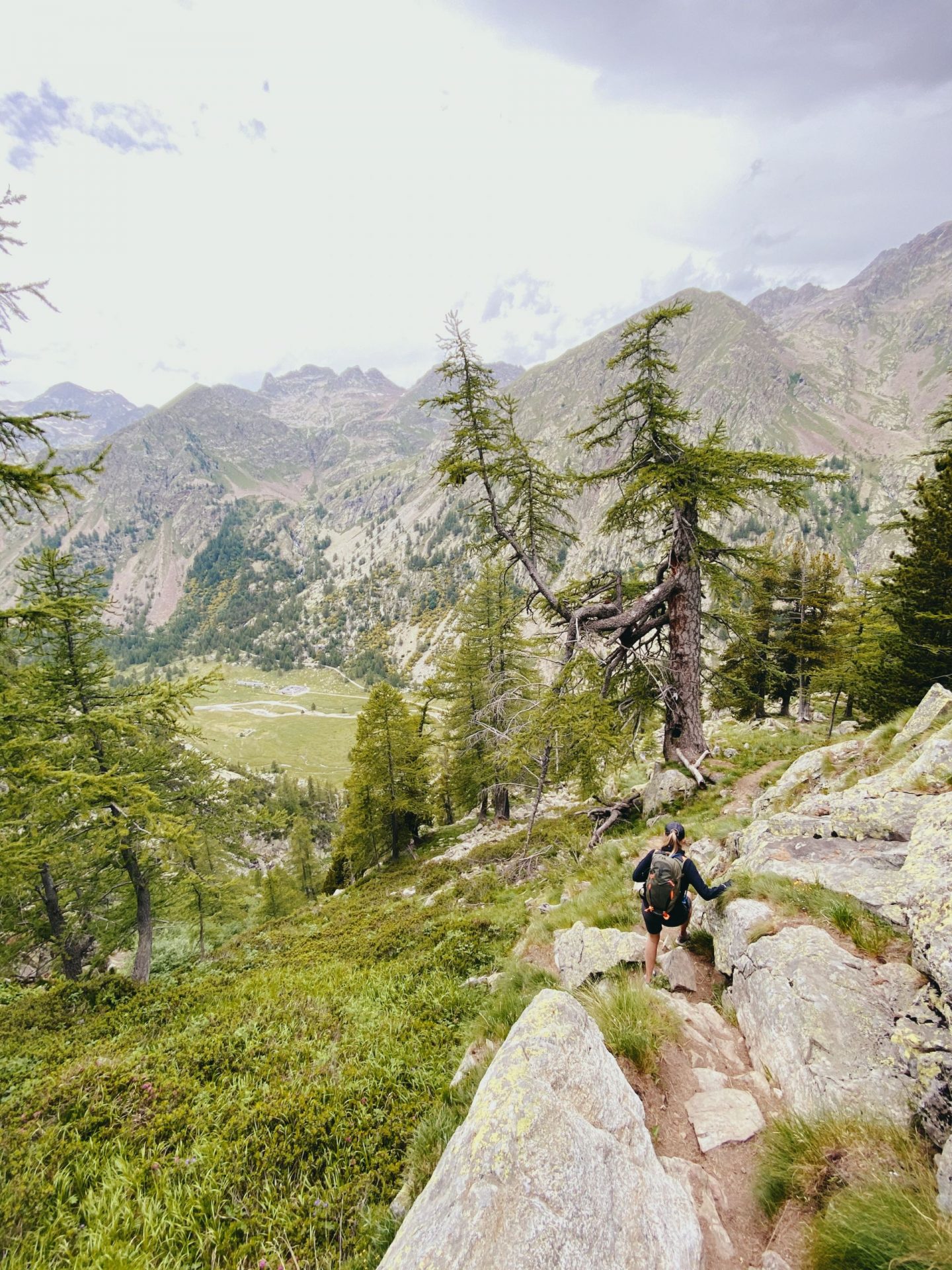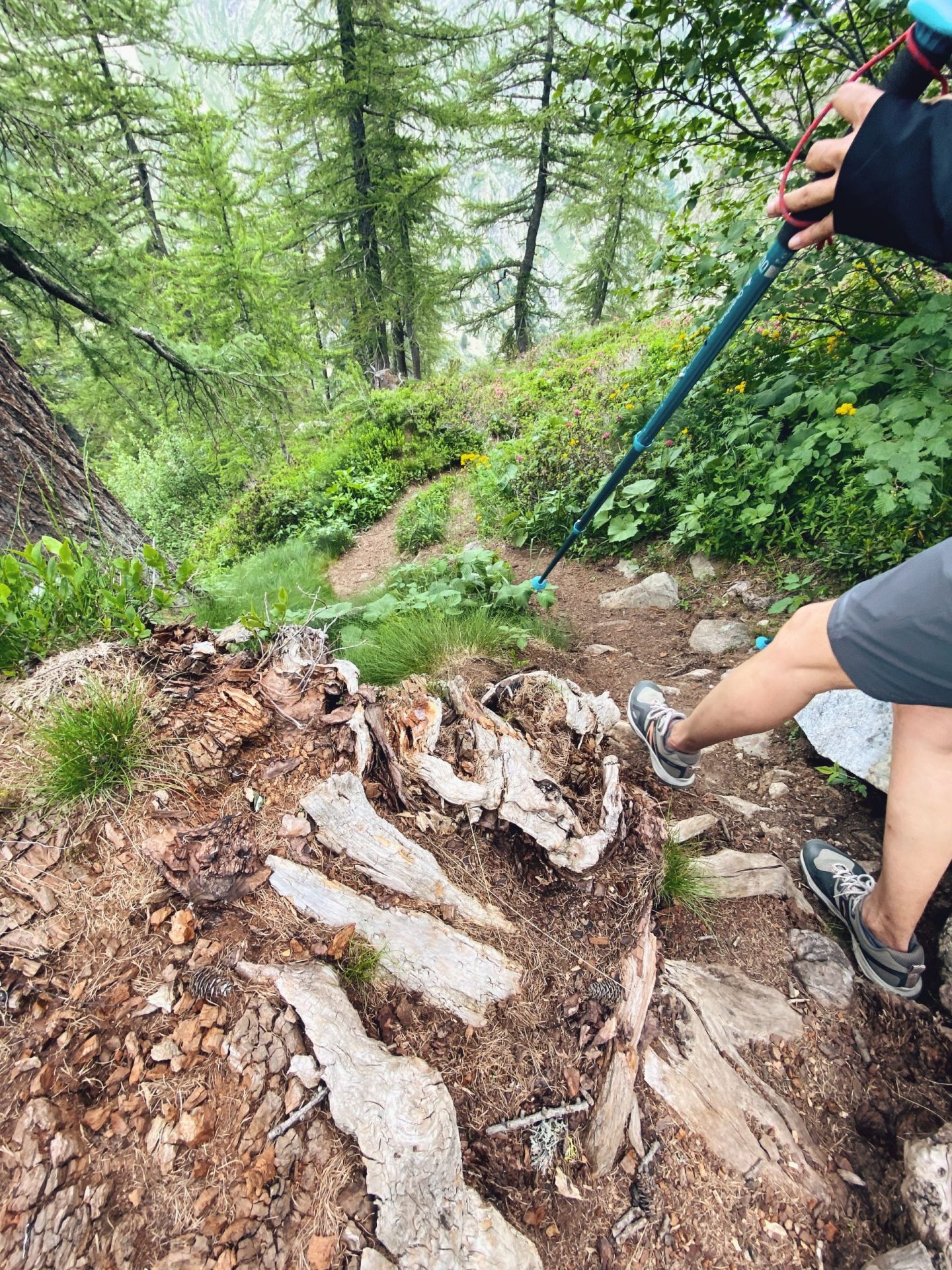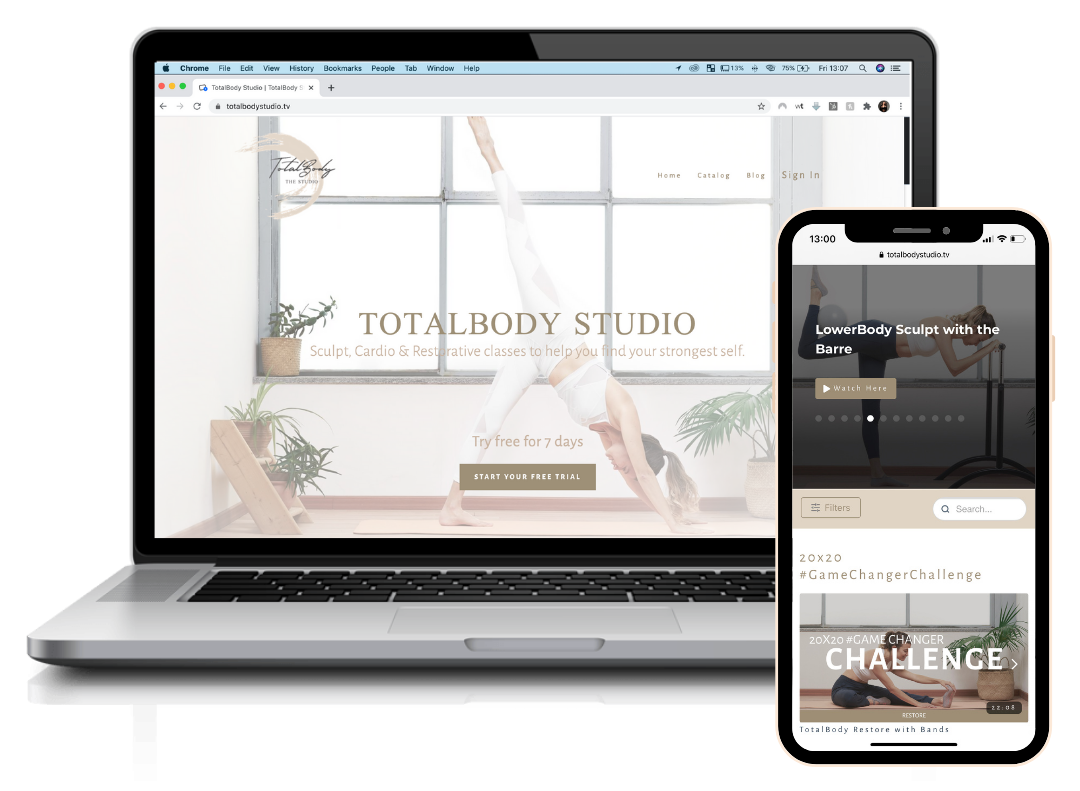


I guess I should consider myself very fortunate to have had the mountains on my doorsteps growing up. Since I could take my first steps (or even before) going hiking was a weekend family kind of activity.
The idea of going on a hike and enjoying some peace and tranquility in a stunning landscape is something I could never get bored of. Plus walking outdoors gives me a chance to clear my head and release stress.
I know from experience that having the right gear can make or break an adventure and it’s not because I spent hours over reviews – though I might have done that too. It’s because I’ve made every mistake there is to make and for some reasons, bad weather follows me about wherever I go.
Your feet in particular are the ones that can turn your hiking experience from something truly enjoyable to hell, in case of blisters or uncomfortable shoes. Depending on the difficulty and type of terrain in most cases your normal trainers simply won’t cut it. If you are thinking to start hiking regularly you will need to invest in proper hiking shoes or boots.
There’s a lot of nitty gritty when it comes to choosing a pair of hiking shoes that suits you and your adventure, but there are a few main features I look for…
HIKING BOOTS OR HIKING TRAINERS (or HIGH/LOW CUT)
Not all adventure footwear – as I like to call them – are created equal and neither are feet or hiking trails. So you need to have a good hard think about what’s gonna work for you. The boots can give you a bit of extra support and stability in the ankle which many people like. The extra height can also offer your ankles a little extra protection from the loose stones, roots and shrubs if you’re going off the beaten path. Also the waterproofing comes up a little higher.
If you regularly hike up and down steep mountains with rocky terrain, you would be better off with a heavier boot with stiffer soles and sides as well as a reinforced, protected toe area. Heavier, stiffer boots are better for long-distance or overnight hikes, especially when you’re carrying a backpack with more than a few pounds in it.
They are an obvious choice for rainy or snowy conditions because their high tops can be tucked under waterproof pants or gaiters to keep the moisture out and – material depending – can be warmer as well.
But mind my words! You must break in a new pair of hiking boots before you hit the trail. Blisters caused by new, unyielding leather are normally just a nuisance in everyday life, but can become a calamity on a remote trail. Whereas given their close association with sneakers and their out-of-the-box comfort, hiking shoes are an obvious choice for recreational hikers. My Merrell trail runners are my shoe of choice for most one-day hikes. They offer more flexibility when I’m going up and down steep slopes and they are much lighter. They say “one kilo on the feet is equal to five on your back when it comes to fatigue”. Comfortable, quick-drying, don’t require breaking in, and they are very easy to pack – so perfect when I travel.
FIT IS KING
Whichever you pick, the most important quality in a hiking trainer or boot is the fit! The boot needs to be comfortably snug to support your foot, particularly your heel. At the same time, it needs to provide space around your toes as well as room for your feet when they swell – which will happen during hot, strenuous hikes. Depending on the brand’s design, you may have to go larger than your normal shoe size. If you’re shopping online, do your homework by taking a close look to the retailer’s sizing charts and fellow customers’ online reviews.
Hiking shoes are easier to fit because they’re softer and mould to your foot more readily than a leather boot. Sizing is similar to a running shoe and should offer snug heel support, arch support, and extra room for your toes.
When you try on a boot or shoe, check the support by rolling your ankles from side to side. Walk around the store and keep the boots on as long as possible to rule out any pressure points or other discomforts. If they’re not right, take them off and try another pair – or four. Every hiking boot is different, designed to fit different types of feet; be patient until you find the right pair and wear the hiking socks you’re actually going to wear when trying on boots.
PICK A WATERPROOF MATERIAL
You know what really sucks? Being in the middle of a trail and realising that those new hiking boots aren’t as waterproof as you thought when a sudden rain (or even worse – a storm) catch you by surprise. So make sure you pick some which are waterproof – not to be confused with water resistant – as those will keep your feet dry and comfortable when you’re crossing streams or walking with rain. I personally prefer GORE-TEX® to leather as they allow my feet a little more breathability: no water comes in but the sweat can get out. That said make sure that you look after your boot or trainer after each hike and you don’t just throw them in the cupboard somewhere, even if you are not a regular hiker. Hiking boots almost always come brand new with a hydrophobic coating. So you need to clean them, keep them dry when they aren’t being used and if you’re hiking often, you need to reapply that coating once or twice a season. Your feet, and your boots, will thank me.
GET THE GRIP!
If the right fit is king…traction is queen! Have you ever been in a situation where you went on a hike with your mates and you were sliding off the rocks whilst they were happily bounding across? I certainly did – and I didn’t find it fun. It’s like going on a very steep road bike trip with a heavy mountain bike and try to pedal to the top – oops I might have done that too. In my humble opinion, there’s a reason why so many hiking shoes brands – including Merrell – use an external product like Vibram in their footwear. It’s tough, resistant and it provides the stability needed on tougher trails. Also preventing stone bruises and much more painful things like dislocated ankles or broken bones.
AND DON’T FORGET GOOD HIKING SOCKS
Hiking socks are at least as important as the boot. Similar to the wrong shoe, the wrong socks can cause excessively sweaty feet, sore heels, chafed ankles, and blisters, leading to a miserable hiking experience. Socks should fit snugly and smoothly, wick moisture, and provide plenty of cushioning. Also bring an extra pair just in case…
End of story morale? investing in good adventure footwear is totally worth for and can make your hike truly unforgettable! Ready to hit the trail?

